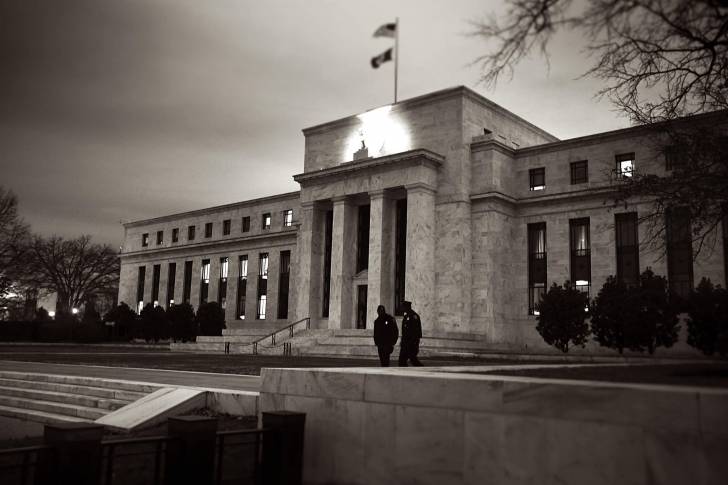by Will Smith, High Yield, AllianceBernstein
How do you blow a No. 2 draft pick?
For the New York Giants, it was a combination of bad math and overconfidence. But at least Big Blue can take comfort in having plenty of company: investors, particularly high-yield bond investors, are prone to similar mistakes.
On April 26, the Giants drafted Saquon Barkley, a star running back who everyone seems to agree is the kind of phenom any team might covet. So far, so good, right? Not exactly.
Betting Big Against the Odds
With some clever number crunching, ESPN figured out that the Giants had much better odds of getting the highest possible value for their money by drafting a quarterback.
Why? Because Barkley will cost the Giants as much as $45 million over the life of his five-year contract, which is not a bargain considering how NFL teams value top-flight running backs. The top players command about $7.5 million as free agents, meaning that Barkley will start out as one of the top-earning RBs in the league. Assuming the value of a great running back rises $500,000 in 2019 and $1 million a year for the next four years, Barkley’s value to the Giants over his contract is $45.5 million—if he performs at an extremely high level and doesn’t get hurt.
Put another way, the Giants would have to be 99% sure that Barkley is going to be a best-in-league running back for the next half-decade to justify his contract. Doing the same math—we’ll spare you the details—the team would only have to be 40% sure that a rookie quarterback would enjoy the same performance to come out ahead economically. That’s because the market holds top quarterbacks a lot more dear than top running backs.
Did we mention that running backs are far more likely to get injured than quarterbacks, making those 99% odds even longer? Or that Giants QB Eli Manning is 37? How about that the Giants had a shot at a few elite quarterbacks with their pick?
The longer you look, the more apparent it is that the New York team had a shaky grasp of both probability and expected value. Placing all hopes on any one pick wasn’t the best move for the Giants. Football is a rough game in which any prospective star can flame out, get injured or have off-field troubles.
If the Giants decided that none of the QBs in the draft were worth the No. 2 pick, they should have traded that pick to a team willing to pay a very high price for it—likely numerous first- and second-round picks. This would have diversified their draft investments, and increased the odds of picking an undervalued player, thus boosting the expected value of their draft.
The Price of Overconfidence
Many investors likewise overestimate their ability to pick high-yield winners, and put too much faith in too few prospects. It’s simply not possible to be 99% confident in any high-yield investment. Bonds that are trading at a steep discount sometimes recover, and one unexpected shift in the business environment can sink those that looked relatively safe.
One need look no further than the great oil swoon of 2014 for an example of the latter. Many US energy companies were generating strong and growing earnings by fracking oil and natural gas in previously untapped US shale formations. But they found themselves on the ropes when Saudi Arabia unexpectedly announced that it would hold production steady even in the face of higher US supply. Traditionally, the kingdom had always adjusted its output to support prices.
The price of West Texas Intermediate crude oil fell from $107 a barrel in June 2014 to just over $26 a barrel in February 2016. Eighty-nine energy companies filed for bankruptcy in 2016, according to Bloomberg, and the value of energy bond defaults more than doubled from the previous year to some $39 billion, according to Fitch.
In fixed income, picking even one loser has serious consequences. Unlike a stock portfolio, in which any one position can generate outsize positive returns to offset losing positions, bonds at par can only return principal and income payments. This makes it very difficult to earn back enough to offset big losses in high-yield portfolios, which bolsters the argument for thinking extremely carefully about the size of any single position.
When in Doubt, Spread Risk Out
Instead, investors need to focus on diversifying their holdings to mitigate the risk of defaults or massive drops in value. Our high-yield portfolio, for example, currently has around 950 bond issues, compared to just 280 for the average high-yield portfolio. It’s possible to achieve an even greater level of diversification by looking across not only a wide variety of sectors and issuers, but also geographies.
While the US is relatively late in the credit cycle, for example, emerging markets have yet to make it to half-time. European companies were slower to recover from the global financial crisis, and also have more room to run. Selecting the right credits in these markets can provide similar total returns with lower risk. Finally, high-income portfolios should look outside traditional corporate bonds to assets such as credit-risk-transfer securities, a kind of mortgage-backed bond.
In other words: Trade a high draft pick in favor of spreading risk, and don’t be seduced by what seem like sure bets. In the high-yield market, there’s no such thing.
Here’s what not to do: Decide that high yield is too tricky and get out altogether. While rising interest rates are a headache for government debt, high-yield bonds do well in environments like the current one, in which rates are climbing because of strong economic growth.
And while some investors worry about putting money into risky assets so late in the credit cycle, markets haven’t seen the kind of low-quality issuance that has caused problems in the past. Issuance of CCC-rated credits is way down from previous cycles—just 3.5% of year-to-date total issuance compared to 28% in 2007. Though corporate debt loads are high, earnings are rising and should receive a further boost from tax reform.
So, stay in the game—but build your roster wisely.
The views expressed herein do not constitute research, investment advice or trade recommendations and do not necessarily represent the views of all AB portfolio-management teams.
Copyright © AllianceBernstein















